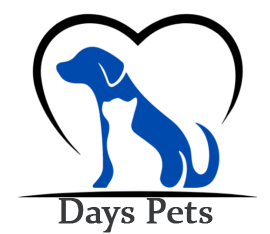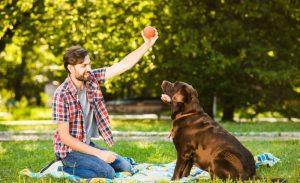Separation anxiety is a condition where dogs experience stress or panic when left alone, often without a human or familiar companion nearby. It goes beyond missing their owner—it’s a genuine emotional and physiological response to being alone that can result in destructive, noisy, or even self-harming behaviors. As more pet owners adopt holistic approaches to wellness, addressing separation anxiety has evolved beyond behavioral training alone to include support like targeted enrichment and natural pet supplements for stress and anxiety.
Common Signs of Separation Anxiety in Dogs
Dogs suffering from separation anxiety display a spectrum of behaviors—some subtle, others severe. At the mild end, you might notice your dog refusing to eat treats or food left for them until you return. This small but telling sign reflects a loss of appetite due to emotional stress, and it’s often one of the earliest indicators that your dog feels insecure when home alone.
Other signs include:
- Restlessness or inability to settle while you’re away
- Constant pacing or watching the door
- Excessive drooling or panting
- Following you from room to room upon your return
- Whining, barking, or howling while alone (neighbors often notice this first)
- Urination or defecation indoors despite recent toileting
- Destructive behaviors like chewing furniture, scratching doors, or digging through carpet
- Escape attempts through doors or windows, sometimes resulting in injury
Dogs with outdoor access may also attempt to dig under fences or gates in efforts to follow their owner. These signs, taken together, indicate that your dog isn’t just bored—they’re distressed.
Understanding the Root of the Problem
Dogs are emotionally driven, present-focused animals. When you leave the house, a dog with separation anxiety doesn’t understand that you’ll return—they only feel the loss. Their stress response is rooted in attachment and insecurity.
This issue can arise in any dog, but it’s especially common in rescue dogs, puppies who were never conditioned to be alone, or dogs that have experienced abrupt routine changes (such as returning to work post-pandemic). Understanding this perspective is the first step toward helping them feel safe when you’re not around.
Preventing Separation Anxiety Before It Starts
The best cure is often prevention. Puppies should be gradually exposed to short, positive absences from an early age. This teaches them that their humans always return and that being alone is normal—not something to fear.
Before leaving your dog alone, ensure their basic needs are met:
- Offer a substantial walk to burn off energy
- Give them access to water and a toilet break
- Avoid departures that feel rushed or dramatic
Crate training can also offer a secure, den-like environment for dogs, reinforcing the idea that alone time is restful and calm. With soft bedding and a cover over the top and sides, a crate becomes a comforting place, not a punishment.
Desensitising Triggers
For many dogs, anxiety begins even before you leave. The moment you grab your keys, lace your shoes, or zip up a jacket, they know what’s coming—and the worry kicks in.
To help break these associations, repeat the trigger actions multiple times a day without actually leaving. Pick up your keys and put them down. Walk to the door and return to the couch. Over time, your dog becomes less sensitive to these cues.
After desensitisation, work on increasing alone time in small increments. Begin by encouraging your dog to settle in another room while you’re home, gradually extending that to minutes alone, then hours. Each step should be positive and non-threatening.
The Role of Enrichment: Keeping the Mind Busy
Dogs, like humans, benefit from mental stimulation—especially during quiet times when their energy has nowhere to go. Without outlets, stress can manifest as destructive behavior. Enrichment provides a healthy focus and a sense of routine during absences.
Interactive toys like treat-dispensing puzzles, frozen Kongs, or sturdy chew items offer both stimulation and reward. For dogs that enjoy chewing (and are more likely to chew destructively when anxious), providing an appropriate outlet like a raw bone or tough toy is key.
But enrichment doesn’t end with toys—it includes everything that engages your dog’s senses and supports their emotional state. One often-overlooked tool is natural pet supplements, which can help regulate mood and promote calm from the inside out.
Natural Pet Supplements to Support Calm Behavior
At Raw & Fresh, we believe in a holistic approach to pet health—and that includes addressing emotional wellbeing through nutrition. Our Natural Pet Supplements are thoughtfully formulated using raw, organic ingredients to enhance wellness in safe and effective ways.
For dogs struggling with stress or anxiety, certain supplements can provide gentle support without the side effects of synthetic alternatives. Calming formulas often include ingredients known for their relaxing properties, helping to reduce nervous energy and promote a balanced mood.
Incorporating supplements into your pet’s routine can:
- Support nervous system health and emotional regulation
- Aid digestion and improve nutrient absorption
- Strengthen immunity and long-term resilience
- Improve coat and skin condition (a common stress indicator)
Whether your dog suffers from occasional anxiety or persistent distress, natural solutions can be part of a broader strategy to help them feel secure and supported. Many owners report visible improvements in behavior when combining enrichment, gentle conditioning, and daily supplement routines.
Australia’s pet supplement market is one of the world’s most advanced, and Raw & Fresh leads with integrity—no fillers, no artificial additives, just real ingredients that work. We offer targeted solutions for stress, gut health, immune function, joint support, and more. Always consult your vet when introducing a new product, but rest assured that our formulas are designed with both efficacy and safety in mind.
With consistent training, the right environment, and natural wellness support, even the most anxious dogs can learn to enjoy their alone time. By addressing their emotional and physical needs before, during, and after your absence, you’re teaching your dog that they’re not forgotten—just waiting for your return.
Separation anxiety isn’t just a behavioral problem—it’s a health and wellbeing issue. With empathy, structure, and holistic care, you can help your dog feel calm, confident, and cared for—even when you’re not home.




